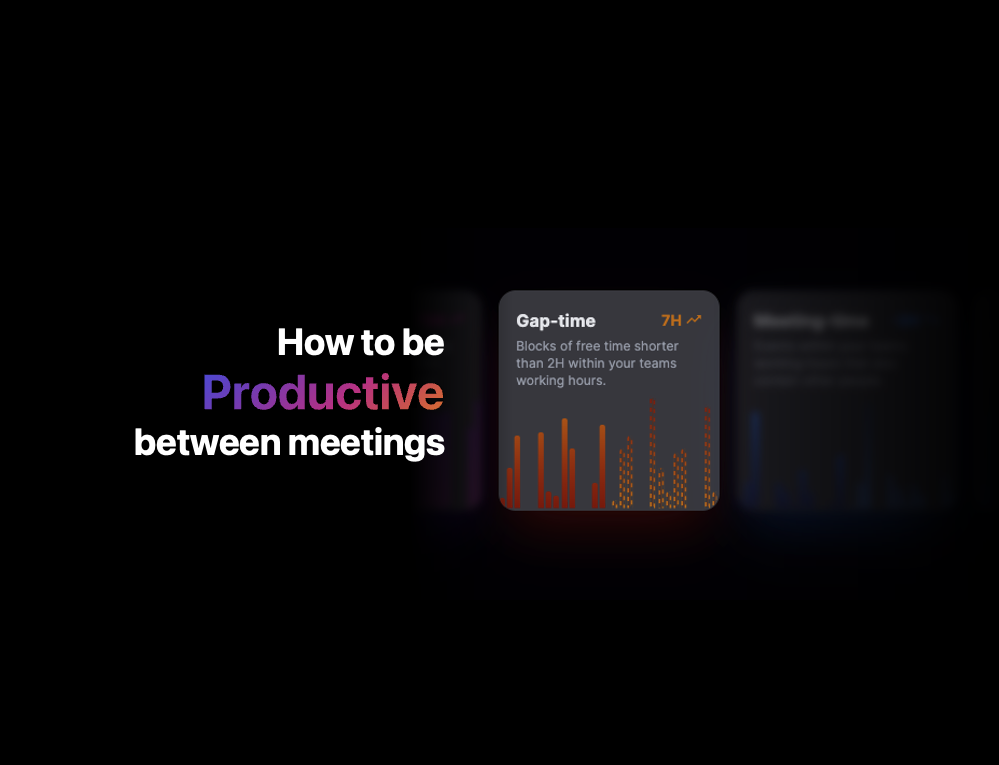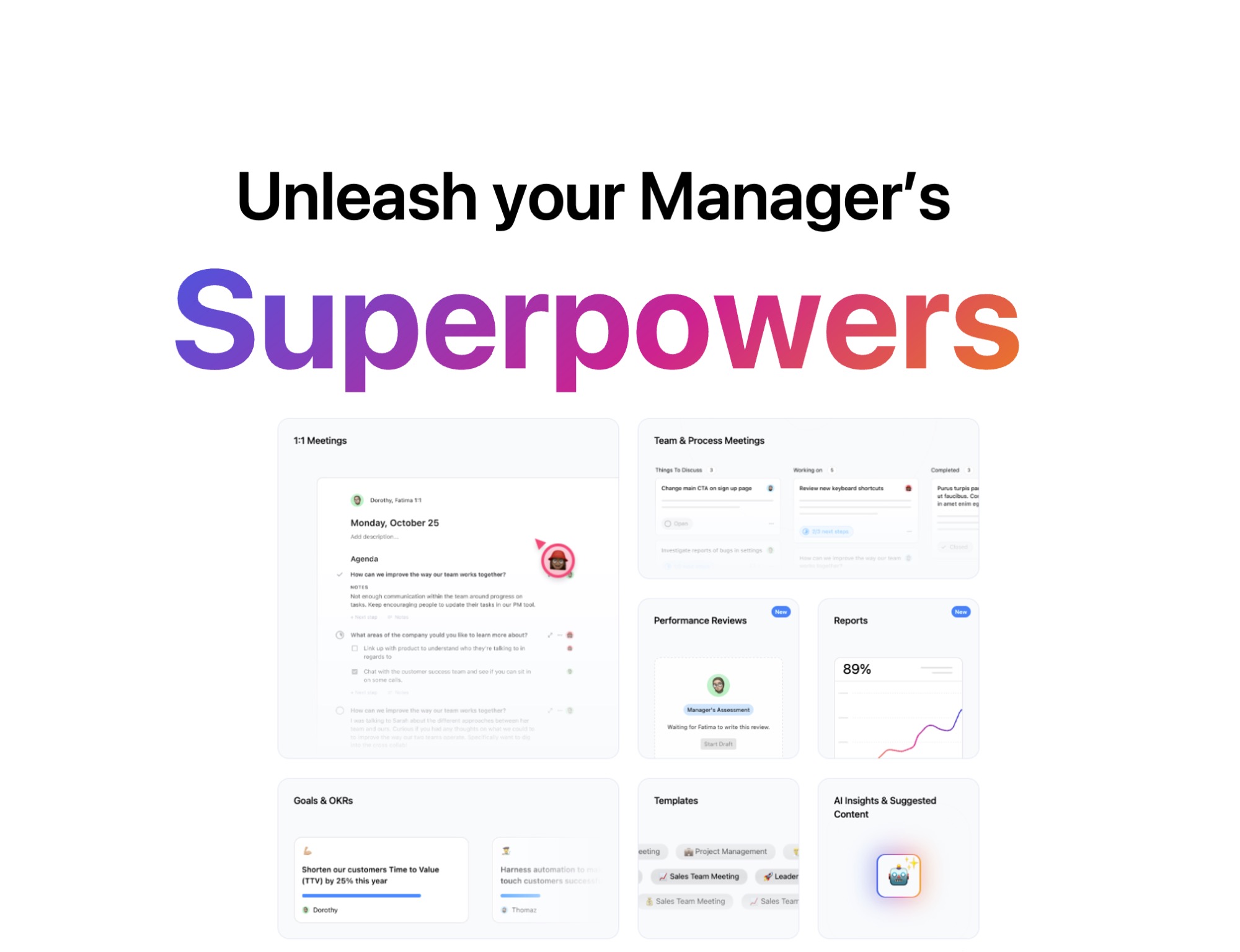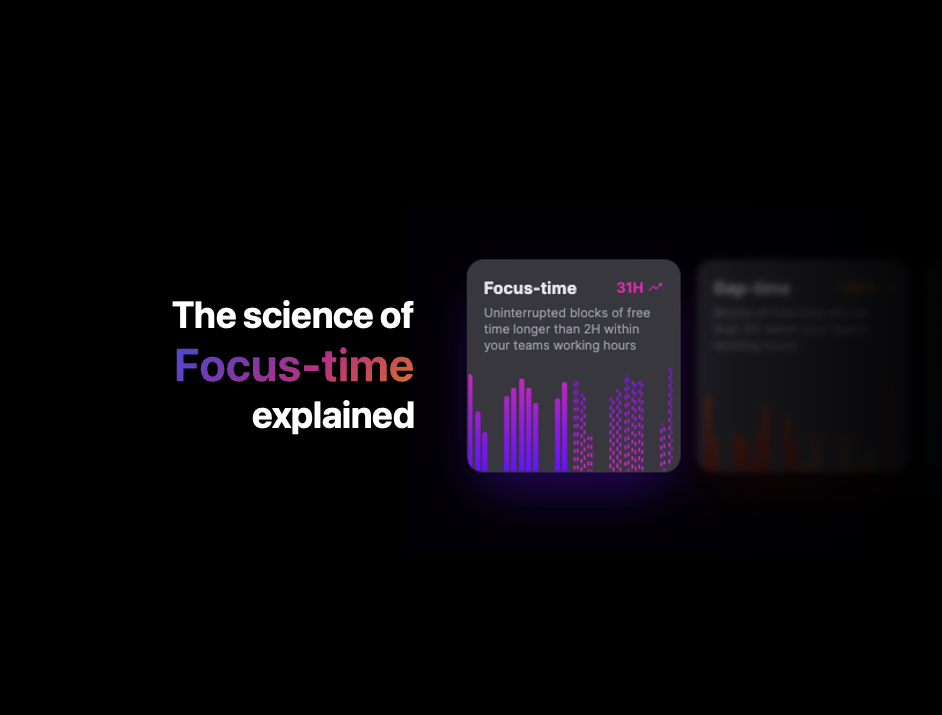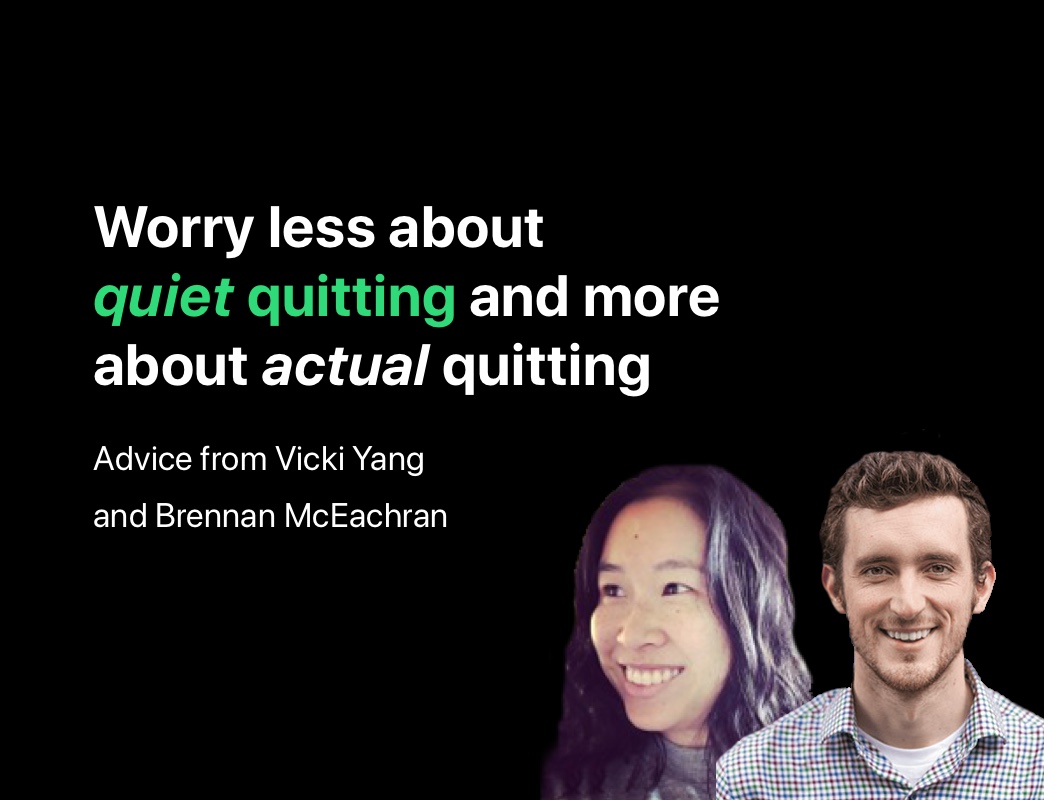A case for gap time (How to be productive between meetings)
7 min readDon't let back-to-back meetings hold you back from being productive. That time between meetings lies the key to productivity. Read about our case for gap time

When you look up anything to do with time management or productivity you cannot help but run across studies extolling the benefits of focus time. But what about those of us with roles that do not allow for large blocks of time? Are we doomed to be less productive than our clear-calendared peers?
For my whole career I have worked in customer facing roles. A productive day for me has generally been one filled with meetings. As I began to manage teams, whatever time was not with customers was dedicated to coaching and collaborating cross-funtionally. The sight of a 2 hour block on my calendar was generally met with confusion.
When your job is to meet with people when do you get the other work done? In the gaps.
In this post I’ll cover
- What is gap time?
- How can you use gap time to be productive?
- What are the benefits of gap time at work?
- How much gap time do you need?
- How can you manage gap time for yourself and your team?
What is gap time?
Sometimes referred to as fragmented-time, Gap time is blocks of free time shorter than 2H within your team’s working hours.
These gaps are less suited for harder, higher impact tasks. Instead, they can be used to prepare for meetings, clear tasks, process communication (emails, slacks), or give your brain a break.
Generally you want this to be low. There is a cognitive cost to task switching and to spending your time in back to back meetings. Avoiding scheduling meetings spaced out with, say, 1hr gaps can deter you from working on complex tasks as you’re unlikely to finish the task before the time runs out. At our worst, this can lead us to be apathetic to begin in the task in the first place, or at best wasted ramp up time and upwards of 30% more stress/frustration.
Depending on your role though you may not be able to achieve that. What you can do is optimize the gap time that you have for productivity.
How can you use gap time to be productive?
Planning your time between meetings is all about making the most of the time you have. Sometimes that means taking a break. But it is not all about taking breaks. You can also use this time to boost your productivity by getting things done.
Start by having a list of your must-do tasks and prioritize them based on urgency and deadline. If you do this at the end of the day or beginning the next day you will have a freshly prioritized list and remove any potential decision fatigue that could waste your time.
Using a to-do or task list will help make these shorter times productive and reduce anxiety. Studies illustrate that making clear, actionable to-do lists will reduce your anxiety about upcoming tasks, and hone your focus on the actions you are doing. And doing so will increase the results of the things you are pursuing.
Mental energy can even be generated at the completion of a task. You can use gap time to replenish the energy expended in meetings. [Deriving Mental Energy From Task Completion]
Other tricks include:
- Use the time to catch up on and process communications – email, slack etc.
- Prepare and plan for your next meeting. Clear objectives and an agenda will keep it focused and potentially shorter.
- Getting momentum on those next steps from your prior meetings in the day.
- Use gap time to review notes from past meetings and reflect on what you’ve learned. This helps you stay organized and prepared for future meetings.
- Use gap time to tidy up your workspace, organize your files, and clear out any clutter. This helps you feel more focused and productive.
What are the benefits of gap time at work?
It is easy to view these short blocks of time as unproductive but breaks in the day can have huge benefits.
The Microsoft Work Trend Index Report looked into the impact of meeting after meeting on our brains and why taking breaks is a must. Too many back-to-back meetings can mess with our ability to concentrate and absorb information. Taking breaks in between can change all that. Breaks help us recharge, refocus, and make smart decisions.
- More bang for your buck: Taking breaks helps you recharge and refocus, leading to better work when you get back at it.
- Stay on track: Breaks can prevent burnout and distractions, keeping you focused and in the game.
- Chill out: Time away from work can help reduce stress and prevent burnout, making for a happier work environment.
- Take care of yourself: Breaks give you time to move, stretch, and eat healthy meals, keeping you in tip-top shape.
- Make smart moves: Breaks give your brain time to process info and come up with creative solutions, making you a decision-making pro.
Basically, taking breaks is crucial for managing our time well, leading to better work, less stress, and improved health.
How much gap time should you have?
How much gap time really does depend on role and seniority. When you manage bigger teams or multiple departments, it is common that more of your work is accomplished in meetings aligning goals, projects and teams. If you are in an external facing role your primary task may be to meet with customers or partners. You may also not have as much control over the timing of meetings.
Hypercontext’s benchmark data suggests that you want to try and keep your gap time below 6.5 hours a week. If you find yourself or members of your team trending well above that you are going to want make changes and watch for burnout.
Moving from meeting to meeting, topic to topic, and depth to depth can put a strain on even the most nimble mind. According to a joint study from Qatalog and Cornell University’s Idea Lab:
- On average, people take nine and a half minutes to get back into a productive workflow after switching between tasks
- 45% of people say context-switching makes them less productive
- 43% of people say switching between tasks causes fatigue.
Where possible you want to limit gap time.
How can you manage gap time for yourself and your team?
Time is a fixed resource. How we use it will determine our productivity. As a manager, that means how your team spends time is one of your greatest points of leverage. It is easy to lose productivity if you are not managing your time, and your teams time, with intention.
Here are some tips to getting the most out of your time:
- Regularly review your recurring meetings. Are they still serving a purpose? Are they at the right time or do they break up the flow of work? Can they be shortened?
- Plan out your meeting cadence to facilitate the flow of information and stack informational meetings on specific days.
- Encourage your team to use gap time for planned breaks. Step away from the computer and give yourself a chance to clear your head.
- Block focus time in the calendar to avoid getting overwhelmed.
- Have a centralized list of smaller tasks that the team can share.
- Use this time to plan and prepare for upcoming meetings or projects. This can help you feel more confident and in control.
Lack of time to perform work causes burnout and stress, costing companies billions of dollars a year. Spending a little time intentionally planning your time will make a world of difference.





